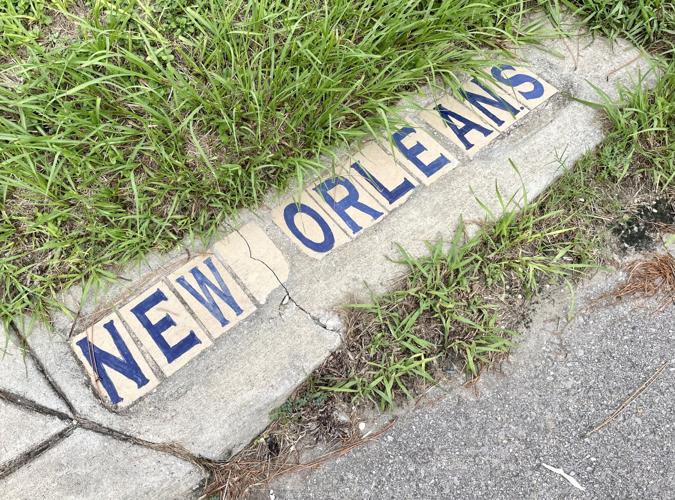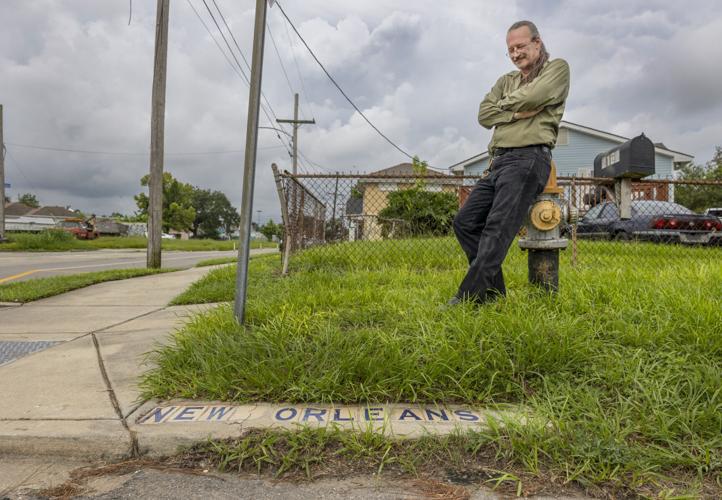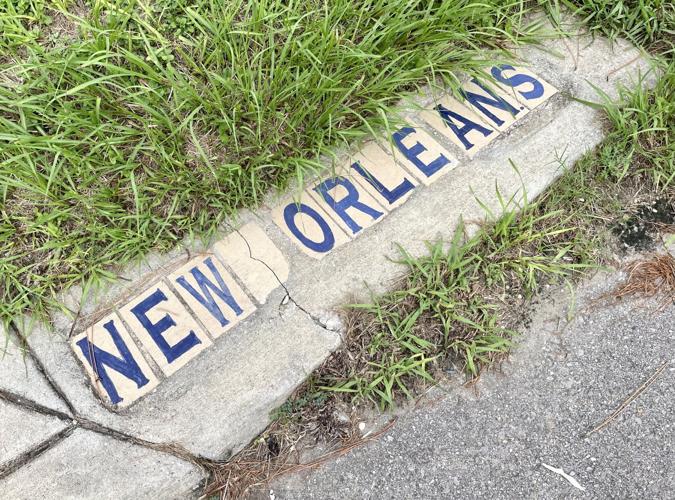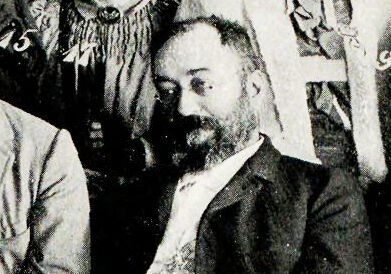Everyone loves the antique blue and white tiles that mark the street corners in the older sections of New Orleans. But did you ever wonder how the unique horizontal street sign system came about? If so, read on.
It all seems to have started in 1884, when a young Belgian named Prosper Lamal was dispatched to New Orleans to manage his country’s booth at the World Cotton Centennial in what’s now Audubon Park.
It was supposed to be a temporary stay, but Lamal fell in love with a D.H. Holmes department store clerk named Marie, got married, and became a permanent resident.

Photo of Prosper Lamal, from the 1894 book titled 'Campbell's illustrated history of the World's Columbian Exposition : compiled as the exposition progressed from the official reports, and most profusely illustrated with copperplate engravings,' by James B. Campbell
Like everybody else, he sometimes had a hard time finding his way around, because the street names and business addresses weren’t terribly well marked at the time. Lamal, who made a living by importing European paving stones and other items that were in demand in the growing city, somehow hit on the idea of bringing in alphabet tiles to label streets and businesses, for a nickel apiece. It stands to reason that he may have been inspired by sidewalk or wall tiles in Europe, but nobody’s sure.
To drum up interest in his concept, Lamal volunteered to lay tiles in front of a French Quarter pool hall, a bank and outside the prestigious Pickwick Club, where developers and businessmen encountered them.
Before we go any further, it’s important to pause and thank Kenner resident and amateur historian Michael Styborski, who, for the past few years, has devoted himself to uncovering the backstory of our beloved 4-by-6-inch squares. Styborski humbly cautions us that his research is incomplete and may require later revision — but isn’t that true of all historical studies?
According to Styborski, by 1893, the sidewalks of Milan and Baronne streets were marked with Lamal’s tiles. Thereafter, the fashion took hold across the city and for the next few decades, it was as if a gigantic game of ceramic tile Scrabble was underway. We can probably assume that Prosper prospered because of it.

Michael Styborski looks around a neighborhood in New Orleans on Tuesday, September 6, 2022. (Photo by Chris Granger | The Times-Picayune | The New Orleans Advocate)
The tiles seem to have been sufficiently visible for the relatively slow horse and buggy era, but with the coming of faster, automobile transport, our charming tiles became obsolete, replaced with the vertical street signs we know now. Any street laid after, say, 1950, is probably tile-less.
Happily, thanks to their durability, many of the tile street signs remain. But that doesn’t mean they’re safe. Street construction, sidewalk repairs, sewer maintenance, and the ordinary effects of time take their toll.
Styborski said that by his count, in 2021, there were 5,627 horizontal street names in the city, composed of 43,466 tiles, a drop of 17 percent since Hurricane Katrina. The Louisiana Landmark Society, an organization devoted to the preservation of architectural marvels, listed “iconic New Orleans detailing,” including street tiles, on its 2022 list of the area's nine most endangered architectural features.
Styborski said the original installation of the street tiles wasn’t managed by city government, it was just a “value-added” service offered by road and sidewalk builders. But currently City Hall attempts to protect the heirlooms. The New Orleans Department of Public Works requires contractors to set aside the street name tiles during construction and reset them when possible or replace them when not. Custom-made replacement tiles cost $40 each.

Michael Styborski looks at a handmade blue and white New Orleans street sign at New Orleans Street on Tuesday, September 6, 2022. (Photo by Chris Granger | The Times-Picayune | The New Orleans Advocate)
Why has a pyramid popped up on New Orleans' Lafitte Greenway? Here’s the story.
What’s the meaning of this message to the 'Gray Ghost' anti-graffiti activist?
When Metairie service dog suddenly needed a service human, his person gladly switched places













